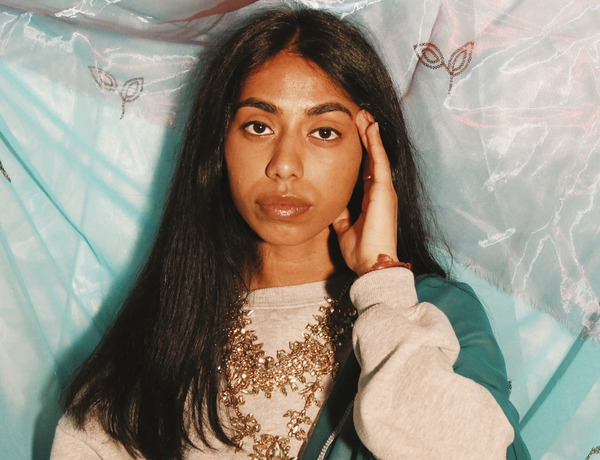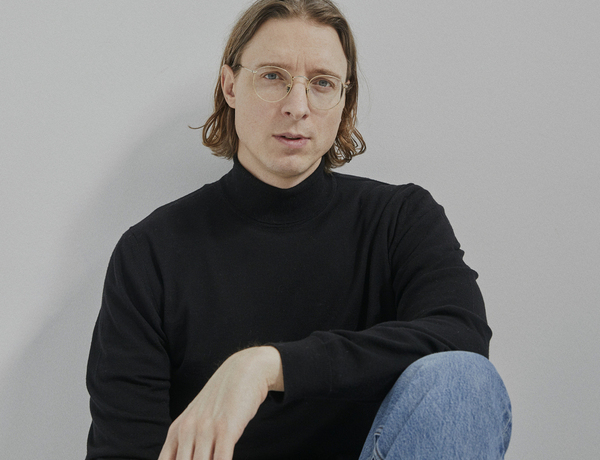Interview with Debbie Millman
Could you tell us a bit about yourself?
I usually say I’m a designer, an author of seven books, co-founder of the Masters in Branding program at the School of Visual Arts, Editorial Director of PrintMag.com, the host of the long-running podcast Design Matters, and the Board Chair of The Joyful Heart Foundation. If I am with my spouse Roxane Gay, I usually say I am her wife.
What initially inspired you to pursue a career in art and design?
I didn’t have a real sense of what I could do or be. The only consistency I had as I was growing up was that I knew I liked making things. As a result, I have been making things for as long as I can remember. When I was a little girl, I made my own coloring books, I made my own paper dolls, I made dioramas, and I even tried to make my own perfume by crushing rose petals into baby oil. I made barrette boxes out of Popsicle sticks, key chains out of lanyards, ashtrays out of clay and Halloween costumes out of construction paper and old sheets. These days I am happiest when I am making something from nothing: it could be a podcast, a magazine, a lesson plan, a presentation, a garden, a meal, or a book. If I am making something and being creative, I am happy.
I went to the State University of Albany in New York because I thought maybe I wanted to be a journalist, and I worked my way up through the ranks of the school newspaper and became the editor of the Arts and Leisure section. Then very quickly found out that, in the grand scheme of things, I was much more interested in what the paper looked like than the specifics of how it ran.
I wasn’t as interested in editing, once I was assigned a story idea, as I was into designing that story. I very quickly realized that it was really design that I should pursue and not journalism, although writing has had, and continues to have, a very big impact on my life and my career.
However, I don’t have a design degree. I have a degree in English Literature, with a Minor in Russian literature, so I actually have a college degree in reading. (joke)
After I graduated and started looking for a job, I saw an ad in the New York Times for a magazine job at publication named Cableview. The ad specifically stated, “no visitors.” But I decided to go there anyway, mostly because it was a block away from where I lived! As a result, I was the first candidate to arrive that Monday morning. The receptionist didn’t even know there was a job opening. When I dropped my resume by, she immediately called the creative director and told him that someone had just dropped a resume by. He came out and I really thought he was going to come out and yell at me! Instead, he came out to see my portfolio and a half hour later I was working.
I ended up being hired as a traffic girl between the design department and the editorial department. I continued my path of doing both, working with words and visuals. Because I had been doing so much editing while I was in school, I still was doing editing and as well as graphic design. That was my first job.
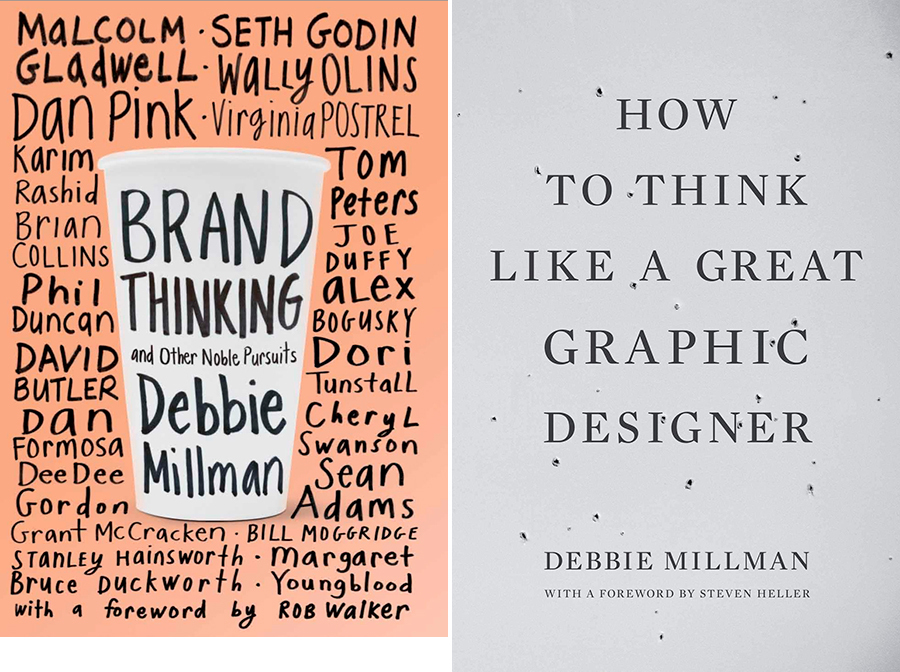
How would you describe your creative process?
I am very suspicious of anybody who says they have a creative process. That’s mostly because I don’t think you can make creativity routine. People are always looking for this sort of methodology. There is no process. Just show up and do the work every day. As for how long something takes—there is no one answer. The same type of challenge might be solved in one hour or it might take one year! Creativity is a very elusive and mysterious endeavor and I truly do not know how to codify it in any way.
How much does the city and surroundings affect your creative output?
I am a native New Yorker and a resident of every borough except the Bronx. I’ve lived in Manhattan now for the last 39 years. The only thing I can tell you that I’ve ever felt 100% certain about is that I always wanted to live in Manhattan. I have a great, big love affair going on with this city. I love almost everything about New York City. I love the intensity of the pace, the diversity of the people, the street signs, even the noise. When I first moved into Manhattan, I was in my twenties. I’d spend endless hours sitting in the windows of cafes on Hudson Street, listening to blues at Dan’s on Second Avenue and dancing on the rooftop of Danceteria. I always went home by myself, but as I walked across 8th street to my apartment in Chelsea, I strutted and sashayed and imagined I was street smart and savvy and somebody. I feel at home here; I feel like I belong; this is my safe place.
What do you struggle with the most in terms of working and living in a city like New York?
I struggle with the overwhelming inequality.
What are your city’s biggest challenges?
There are many: as mentioned above, the inequality, the segregation, the lack of accessibility for anyone that has any physical issues, the cost of groceries in most supermarkets, the cost of living and the quality of life for anyone that is not upper-middle class, the vermin and the trash.
What are the solutions that your city needs to implement?
Solutions for all of the above, as well as alternatives for the unhoused, and addressing the lack of resources for anyone financially or physically challenged.
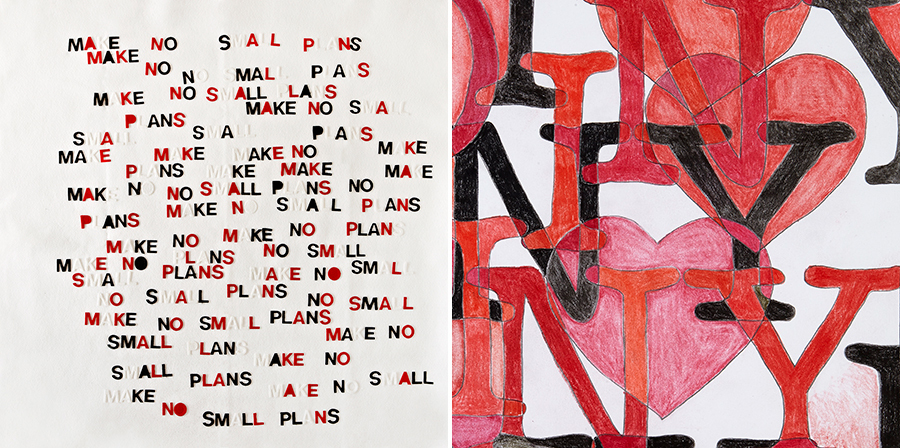
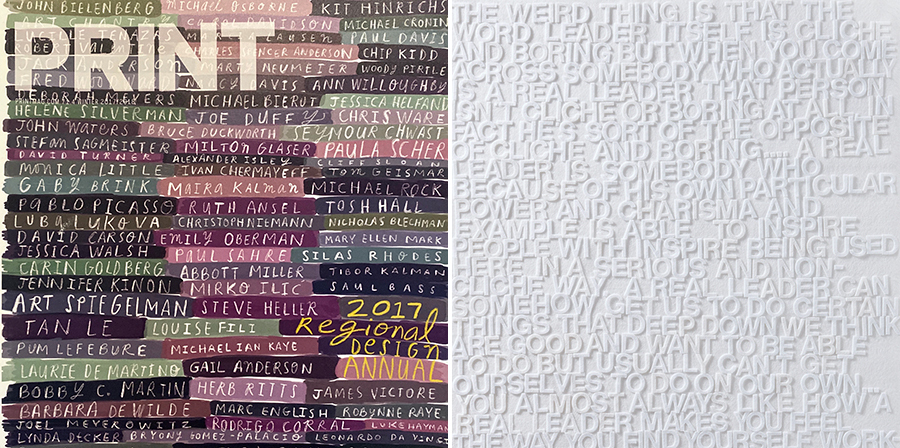
The responsibility of the council in every city is to provide a solid foundation of design, art, and cultural facilities, is that still evident in New York?
Yes and no. I think there is ample opportunity to view some of the best and most established art, design, theater, music, and performance, but there isn’t as much opportunity for the experimental and the unproven.
Do you think it is also the responsibility of the artist/creative to improve the quality of people's lives in their city?
Yes, I do. I think when we try to improve things, what we get in return is immeasurable. We might be improving something because someone helped us, or we are improving something because we know we should. Either way, when we do this, something remarkable happens: we get a uniquely human, mutually shared experience. And in that experience, continuity develops. You improve something, you get something in return and the cycle is perpetuated. As long as we are capable, and as long as we participate, the cycle can never be broken.
In 2005 you started a radio show, Design Matters, the first ever podcast about design and creative culture. Where did the inspiration and idea first come from?
I started Design Matters in 2005 during a particularly bad creative slump. I often say that the show began with a Hail-Mary idea and a telephone line. After an offer from the Voice America Business Network to create an online radio show in exchange for a fee—yes, I had to pay them—I decided that interviewing designers who I revered would be an inventive way to ask my heroes everything I wanted to know about them. And since I was so desperate to reignite my creative spirit, I figured I had nothing to lose but my money. I started broadcasting Design Matters live from a telephone modem in my office in the Empire State Building at Sterling Brands.
After the first dozen episodes, I began to distribute the episodes free on iTunes. I realized the opportunity to share the brilliance of my guests with an audience I never expected was the gift of a lifetime, not only because I had a built-in permission slip to ask some of the greatest designers in the world questions about how they became who they are, but also because I could freely offer this to others as well. Design Matters inadvertently became the first ever design podcast and is now one of the oldest podcasts on the internet.

As both podcasting and Design Matters grew in popularity, in 2009 I recognized that I needed to upgrade the sound quality of the show. After 100 episodes on Voice America, I was invited to publish Design Matters on Design Observer by co-founder William Drenttel. I hired producer Curtis Fox and began recording the show at the specially built podcast studio in my Masters in Branding Program here at the School of Visual Arts.
The show has transitioned from a show about design to a show about how incredibly creative people design their lives. I’m still endlessly fascinated by the arc of a life, and I’ve interviewed nearly 400 designers, artists, writers, business leaders, musicians, poets, playwrights and more. In the 17 years since the launch, Design Matters has won a Cooper Hewitt National Design Award, in 2021 and 2022 Apple designated it one of their “All Time Favorite Podcasts,” the show has been nominated for eight Webby Awards and it has been listed on over 100 “Best Podcasts” lists, including one of the best podcasts in the world by Business Insider and Vanity Fair. And we are now part of the TED Audio Collective.
Ironically, I started Design Matters when I felt like I was in a bit of a creative slump. This was before I had started teaching at SVA, and at the time, all of my work had veered to the commercial. I felt my creative spirit was dying. I thought the opportunity to create a little internet radio show with Voice America, if nothing more, could be a fun, creative experience. It’s ended up profoundly changing my life.
You have interviewed so many of the world's most creative people. Are there any designers/creatives that particularly inspire you at the moment?
Paula Scher, always. She has created a body of work over the last four decades that has been groundbreaking, genre-making, inspiring and meaningful. And after all the awards, and accolades and medals, she is still working and making some of the best work of her life.
My fairy-godfather, as I call him, and the magician of my life is Steve Heller. Steve asked me if I would cofound the Masters in Branding Program at School of Visual Arts and also gave me my first book opportunity. He’s someone I would go to for advice about anything. And he’s been on the show more than anyone else in its history—we just released our fifteenth episode! And, IMHO, each new conversation is better than the last.
Something I’d like to mention: I’ve conducted nearly five hundred interviews with some of the greatest creative minds in our culture, and the one common denominator that I can reveal that great designers, artists, writers, journalists, educators, marketers, thought leaders, musicians, performers and scientists have shared with me over the years is that they all feel like they have to get up every day and do it again. They all feel like they very well may be discovered as phonies, or that they may never ever achieve what they’d hoped. The only exceptions have been Milton Glaser and Massimo Vignelli. But I think the common denominator that they share is that when I conducted both interviews, they were both in their eighties! I think by the time we’re eighty, I would hope we can all be like, “ok, you know, this is who I am.”

Can you tell us about any current or future projects that you are particularly excited about?
In addition to continuing my work with SVA, Print Magazine and Design Matters, I have a couple of awesome projects on the horizon: I have a deck of cards to help people create their very own 10 Year Plan launching from Chronicle Books this November. I am also working on designing an installation for the about-to-launch The Museum of Broadway in New York City.
If you could add or change something about New York, what would that be?
I would improve the conditions for those that are financially and/or physically challenged.
What do you do to switch off?
I sleep! I love sleeping and it helps recharge my body, my brain, and my spirit. I also love to read, to garden, to lounge around and watch television and films with my wife and pets. Roxane and I are also avid travelers and Scrabble players and when we get to do both, it is perfection.
What does home mean to you?
Home is everything to me. It’s my canvas for living, the place I feel most creative, most alive, and entirely safe.
Describe the perfect day for you in New York.
It’s Saturday. I wake up late, Roxane by my side. We play with our dog Max, and I feed the cats. I pour myself a large cup of McNulty’s coffee and get back into bed. I read the newspaper, then get ready for the day. Roxane and I take Max out for a walk and head over to the Farmer’s Market and pick out gorgeous heirloom tomatoes and shiny honey crisp apples and an olive baguette and fresh flowers. We make a brunch of toasted bread and sliced tomatoes drizzled with some olive oil we brought back from Crete. Then we head out to the Whitney Museum and look at some of the best art in the world. Afterward, we stroll over to the West Village, stop at Via Carota for a cocktail, and then have dinner at CookShop. We walk home via the Highline to our Chelsea home, light a fire in the fireplace, snuggle up and talk until we can’t talk anymore.
Debbie Millman - mixtape
"It’s a mixtape with range: jazz, hip-hop, folk, women singer-songwriters, and my favorite showtune thrown in." _Debbie Millman
Sometimes people relate a specific smell to the city they live in or the place they grew up, does New York evoke a personal smell to you?
Not a smell, but I’d know the New York City light anywhere.
If you weren't living in New York and could choose any city to live in, where would that be, and why?
I would choose Los Angeles, as that is where my wife bought a house one week before we met, and she loves the house there as much as we both love our home in New York. : )
new york by Debbie Millman
A selection of places in New York - recommended by designer an author Debbie Millman. See Debbie's citylikeyou profile page here
More Interviews


